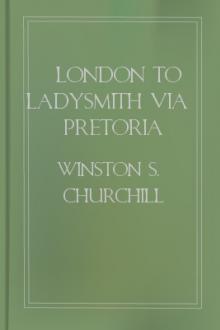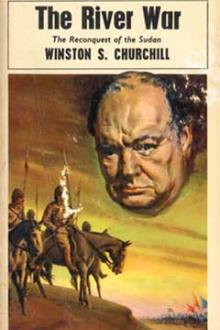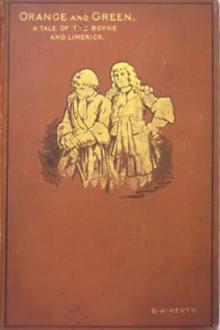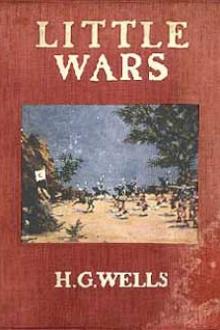The Story of the Malakand Field Force, Winston S. Churchill [best romantic novels in english .txt] 📗

- Author: Winston S. Churchill
- Performer: -
Book online «The Story of the Malakand Field Force, Winston S. Churchill [best romantic novels in english .txt] 📗». Author Winston S. Churchill
The Project Gutenberg EBook of The Story of the Malakand Field Force by Winston S. Churchill
Copyright laws are changing all over the world. Be sure to check the copyright laws for your country before downloading or redistributing this or any other Project Gutenberg eBook.
This header should be the first thing seen when viewing this Project Gutenberg file. Please do not remove it. Do not change or edit the header without written permission.
Please read the “legal small print,” and other information about the eBook and Project Gutenberg at the bottom of this file. Included is important information about your specific rights and restrictions in how the file may be used. You can also find out about how to make a donation to Project Gutenberg, and how to get involved.
**Welcome To The World of Free Plain Vanilla Electronic Texts**
**eBooks Readable By Both Humans and By Computers, Since 1971**
*****These eBooks Were Prepared By Thousands of Volunteers!*****
Title: The Story of the Malakand Field Force Author: Winston S. Churchill
Release Date: December, 2005 [EBook #9404]
[Yes, we are more than one year ahead of schedule]
[This file was first posted on September 29, 2003]
Edition: 10
Language: English
Character set encoding: ASCII
*** START OF THE PROJECT GUTENBERG EBOOK MALAKAND FIELD FORCE ***
Produced by Ronald J. Goodden in memory of Royal G. Goodden
THE STORY OF THE MALAKAND FIELD FORCE
An Episode of Frontier War by Sir Winston S. Churchill
“They (Frontier Wars) are but the surf that marks the edge and the advance of the wave of civilisation.”
LORD SALISBURY, Guildhall, 1892
CONTENTS
Preface
Chapter I: The Theatre of War
Chapter II: The Malakand Camps
Chapter IV: The Attack on the Malakand Chapter V: The Relief of Chakdara
Chapter VI: The Defence of Chakdara
Chapter VIII: The Advance Against the Mohmands Chapter IX: Reconnaissance
Chapter XI: The Action of the Mamund Valley, 16th September Chapter XII: At Inayat Kila
Chapter XIV: Back to the Mamund Valley Chapter XV: The Work of the Cavalry
Chapter XVI: Submission
Chapter XVIII: The Riddle of the Frontier Appendix
THIS BOOK
IS INSCRIBED TO
MAJOR-GENERAL SIR BINDON BLOOD, K.C.B.
UNDER WHOSE COMMAND THE OPERATIONS THEREIN
RECORDED WERE CARRIED OUT; BY WHOSE GENERALSHIP
THEY WERE BROUGHT TO A SUCCESSFUL CONCLUSION; AND TO WHOSE KINDNESS THE AUTHOR IS INDEBTED
FOR THE MOST VALUABLE AND FASCINATING EXPERIENCE
OF HIS LIFE.
PREFACE“According to the fair play of the world, Let me have an audience.”
“King John,” Act v., Sc. 2.
On general grounds I deprecate prefaces. I have always thought that if an author cannot make friends with the reader, and explain his objects, in two or three hundred pages, he is not likely to do so in fifty lines. And yet the temptation of speaking a few words behind the scenes, as it were, is so strong that few writers are able to resist it. I shall not try.
While I was attached to the Malakand Field Force I wrote a series of letters for the London Daily Telegraph. The favourable manner in which these letters were received, encouraged me to attempt a more substantial work. This volume is the result.
The original letters have been broken up, and I have freely availed myself of all passages, phrases, and facts, that seemed appropriate.
The views they contained have not been altered, though several opinions and expressions, which seemed mild in the invigorating atmosphere of a camp, have been modified, to suit the more temperate climate of peace.
I have to thank many gallant officers for the assistance they have given me in the collection of material. They have all asked me not to mention their names, but to accede to this request would be to rob the story of the Malakand Field Force of all its bravest deeds and finest characters.
The book does not pretend to deal with the complications of the frontier question, nor to present a complete summary of its phases and features. In the opening chapter I have tried to describe the general character of the numerous and powerful tribes of the Indian Frontier.
In the last chapter I have attempted to apply the intelligence of a plain man to the vast mass of expert evidence, which on this subject is so great that it baffles memory and exhausts patience. The rest is narrative, and in it I have only desired to show the reader what it looked like.
As I have not been able to describe in the text all the instances of conduct and courage which occurred, I have included in an appendix the official despatches.
The impartial critic will at least admit that I have not insulted the British public by writing a party pamphlet on a great Imperial question. I have recorded the facts as they occurred, and the impressions as they arose, without attempting to make a case against any person or any policy. Indeed, I fear that assailing none, I may have offended all. Neutrality may degenerate into an ignominious isolation. An honest and unprejudiced attempt to discern the truth is my sole defence, as the good opinion of the reader has been throughout my chief aspiration, and can be in the end my only support.
Winston S. Churchill Cavalry Barracks,
Bangalore, 30th December, 1897
The Ghilzaie chief wrote answer: “Our paths are narrow and steep.
The sun burns fierce in the valleys, and the snow-fed streams run deep;
… … … .
So a stranger needs safe escort, and the oath of a valiant friend.”
“The Amir’s Message,” SIR A. LYALL.
All along the north and northwest frontiers of India lie the Himalayas, the greatest disturbance of the earth’s surface that the convulsions of chaotic periods have produced. Nearly four hundred miles in breadth and more than sixteen hundred in length, this mountainous region divides the great plains of the south from those of Central Asia, and parts as a channel separates opposing shores, the Eastern Empire of Great Britain from that of Russia. The western end of this tumult of ground is formed by the peaks of the Hindu Kush, to the south of which is the scene of the story these pages contain. The Himalayas are not a line, but a great country of mountains. By one who stands on some lofty pass or commanding point in Dir, Swat or Bajaur, range after range is seen as the long surges of an Atlantic swell, and in the distance some glittering snow peak suggests a white-crested roller, higher than the rest. The drenching rains which fall each year have washed the soil from the sides of the hills until they have become strangely grooved by numberless water-courses, and the black primeval rock is everywhere exposed. The silt and sediment have filled the valleys which lie between, and made their surface sandy, level and broad. Again the rain has cut wide, deep and constantly-changing channels through this soft deposit; great gutters, which are sometimes seventy feet deep and two or three hundred yards across. These are the nullahs. Usually the smaller ones are dry, and the larger occupied only by streams; but in the season of the rains, abundant water pours down all, and in a few hours the brook has become an impassable torrent, and the river swelled into a rolling flood which caves the banks round which it swirls, and cuts the channel deeper year by year.
From the level plain of the valleys the hills rise abruptly. Their steep and rugged slopes are thickly strewn with great rocks, and covered with coarse, rank grass. Scattered pines grow on the higher ridges. In the water-courses the chenar, the beautiful eastern variety of the plane tree of the London squares and Paris boulevards, is occasionally found, and when found, is, for its pleasant shade, regarded with grateful respect. Reaching far up the sides of the hills are tiers of narrow terraces, chiefly the work of long-forgotten peoples, which catch the soil that the rain brings down, and support crops of barley and maize.
The rice fields along both banks of the stream display a broad, winding strip of vivid green, which gives the eye its only relief from the sombre colours of the mountains.
In the spring, indeed, the valleys are brightened by many flowers—wild tulips, peonies, crocuses and several kinds of polyanthus; and among the fruits the water melon, some small grapes and mulberries are excellent, although in their production, nature is unaided by culture. But during the campaign, which these pages describe, the hot sun of the summer had burnt up all the flowers, and only a few splendid butterflies, whose wings of blue and green change colour in the light, like shot silk, contrasted with the sternness of the landscape.
The valleys are nevertheless by no means barren. The soil is fertile, the rains plentiful, and a considerable proportion of ground is occupied by cultivation, and amply supplies the wants of the inhabitants.
The streams are full of fish, both trout and mahseer. By the banks teal, widgeon and wild duck, and in some places, snipe, are plentiful. Chikor, a variety of partridge, and several sorts of pheasants, are to be obtained on the hills.
Among the wild animals of the region the hunter may pursue the black or brown mountain bear, an occasional leopard, markhor, and several varieties of wild goat, sheep and antelope. The smaller quadrupeds include hares and red foxes, not unlike the British breed, only with much brighter coats, and several kinds of rats, some of which are very curious and rare. Destitute of beauty but not without use, the scaly ant-eater is frequently seen; but the most common of all the beasts is an odious species of large lizard, nearly three feet long, which resembles a flabby-skinned crocodile and feeds on carrion. Domestic fowls, goats, sheep and oxen, with the inevitable vulture, and an occasional eagle, complete the fauna.
Over all is a bright blue sky and powerful sun. Such is the scenery of the theatre of war.
The inhabitants of these wild but wealthy valleys are of many tribes, but of similar character and condition. The abundant crops which a warm sun and copious rains raise from a fertile soil, support a numerous population in a state of warlike leisure. Except at the times of sowing and of harvest, a continual state of feud and strife prevails throughout the land. Tribe wars with tribe. The people of one valley fight with those of the next. To the quarrels of communities are added the combats of individuals. Khan assails khan, each supported by his retainers.
Every tribesman has a blood feud with his neighbor. Every man’s hand is against the other, and all against the stranger.
Nor are these struggles conducted with the weapons which usually belong to the races of such development. To the ferocity of the Zulu are added the craft of the Redskin and the marksmanship of the Boer. The world is presented with that grim spectacle, “the strength of civilisation





Comments (0)